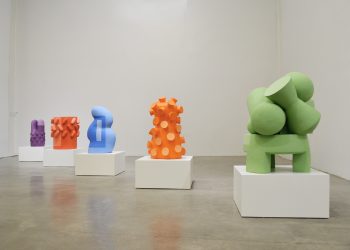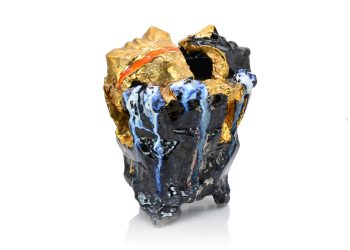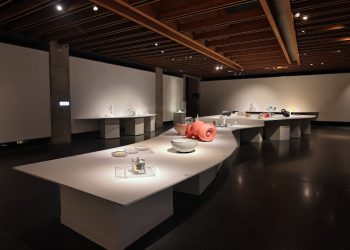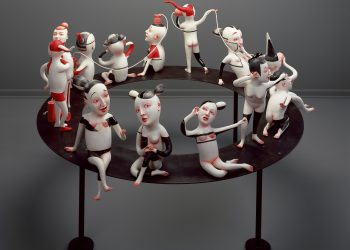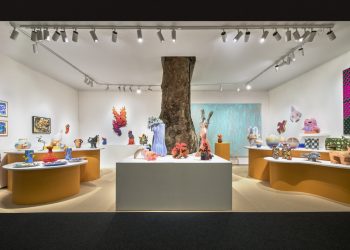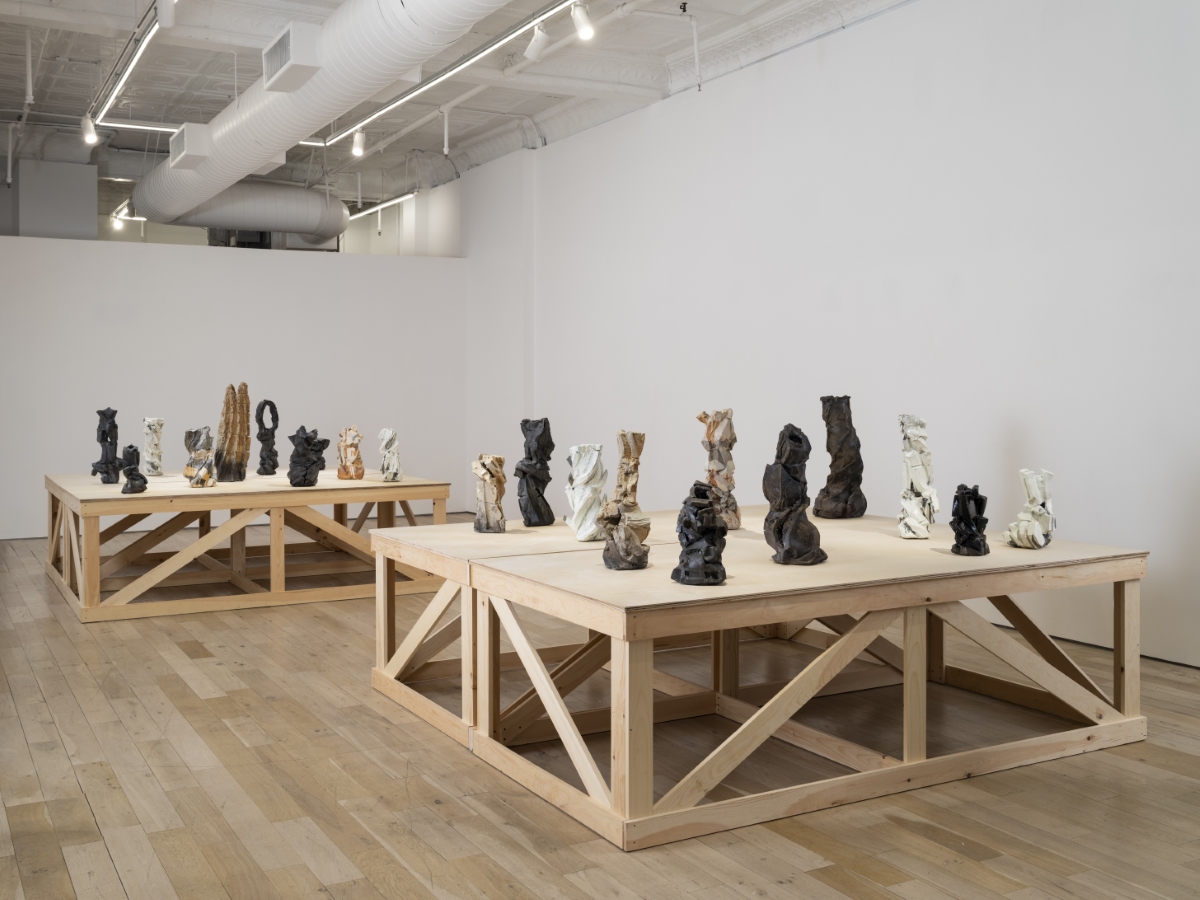
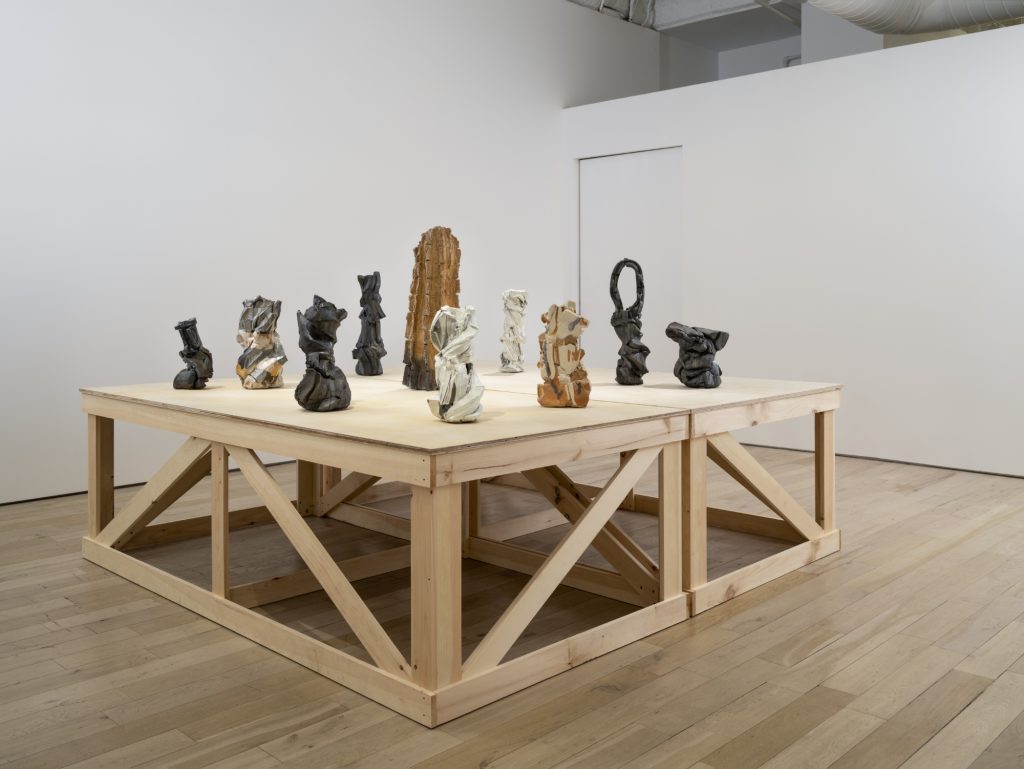
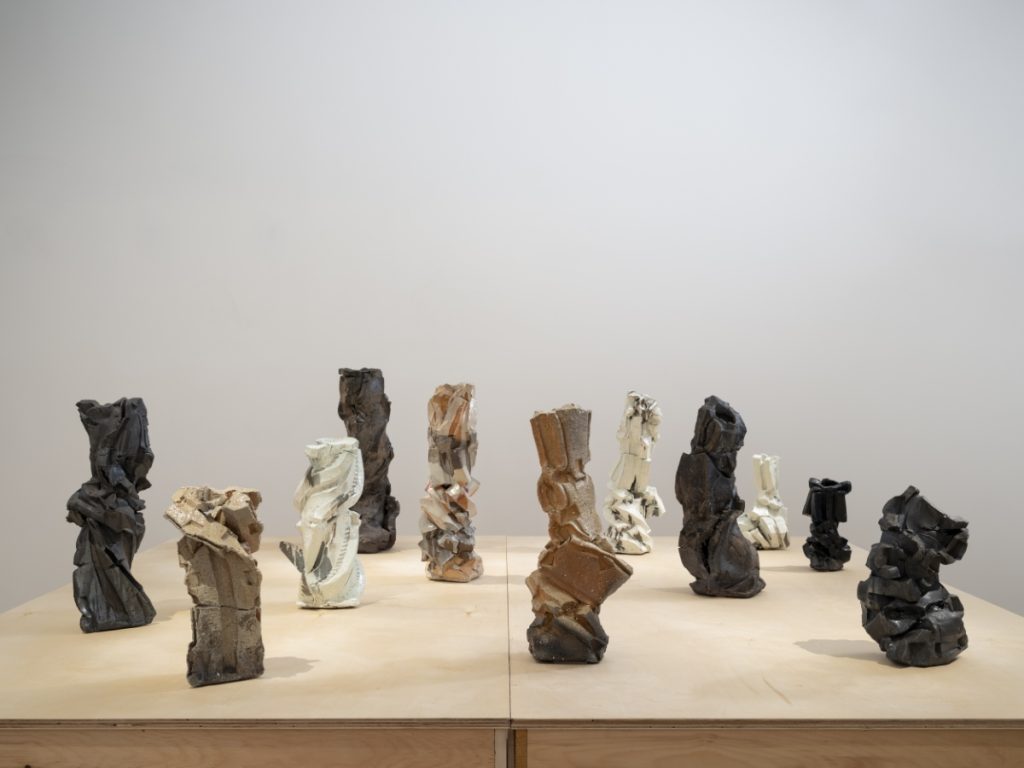
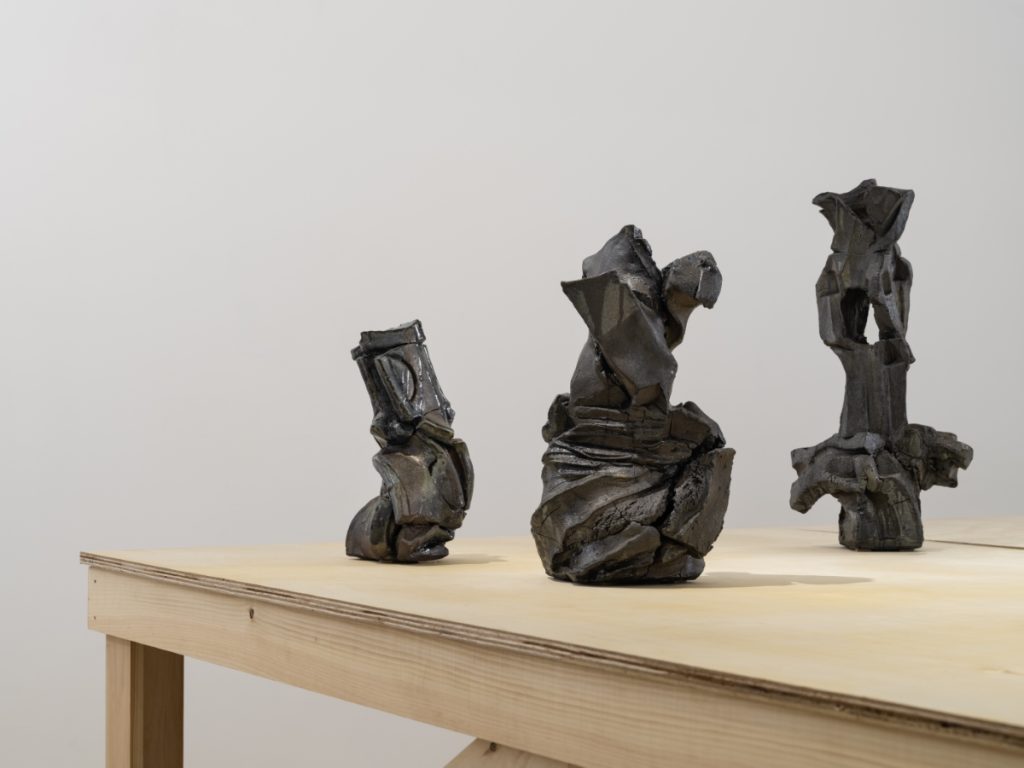
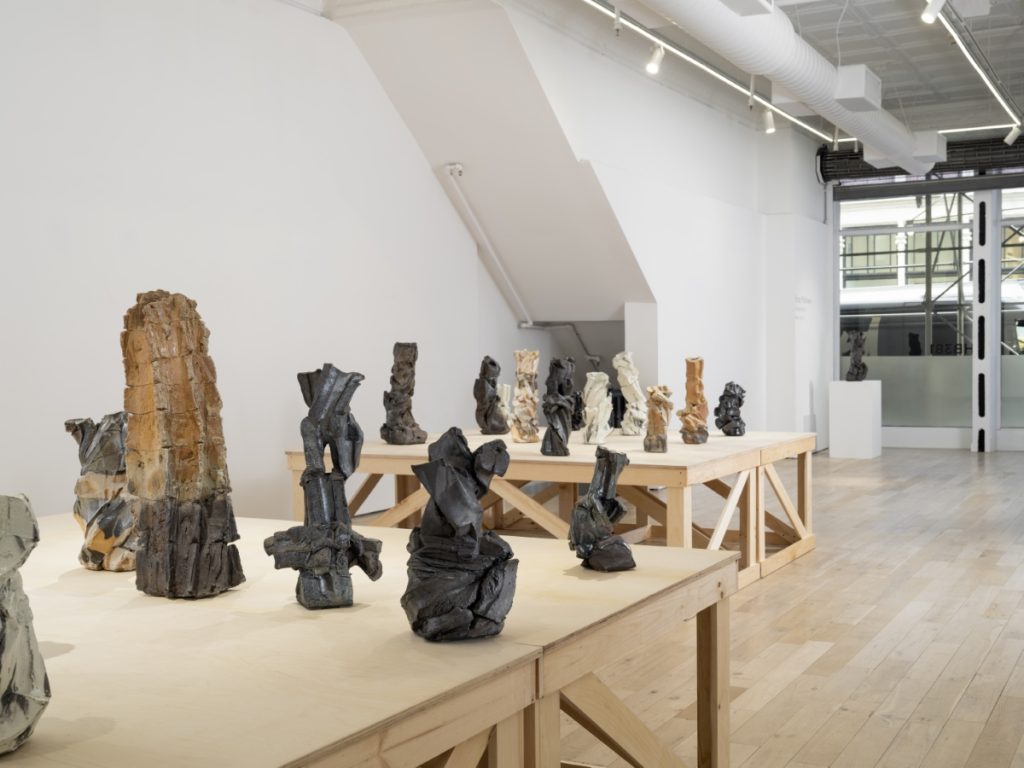
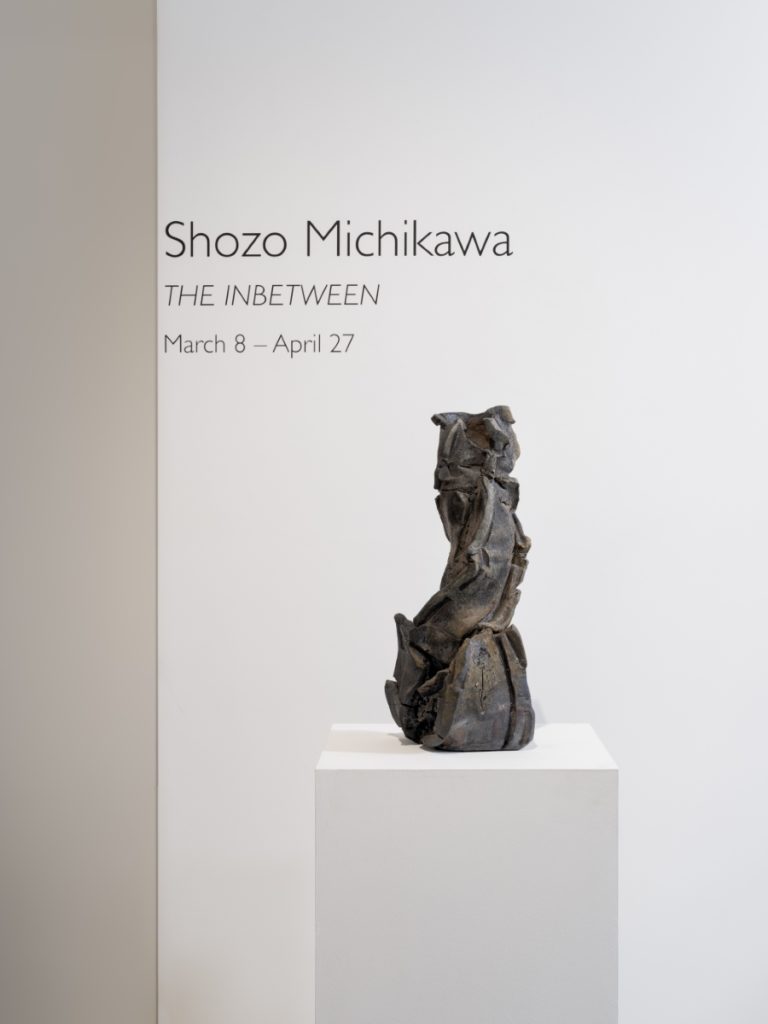
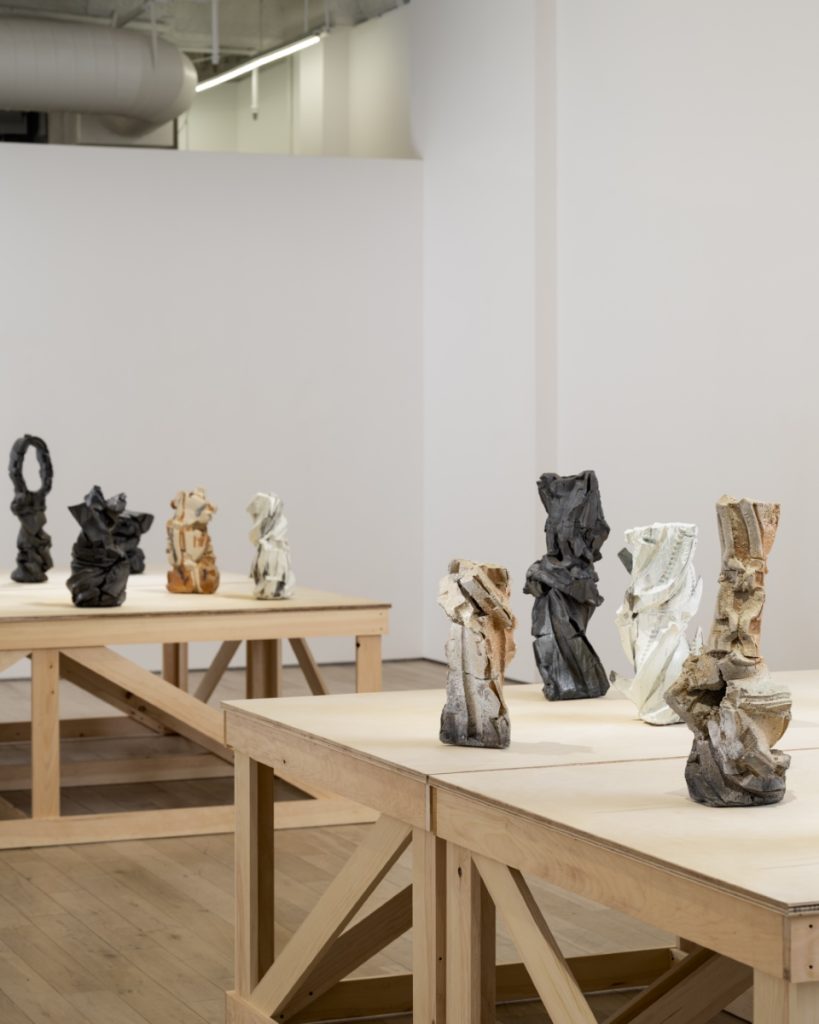
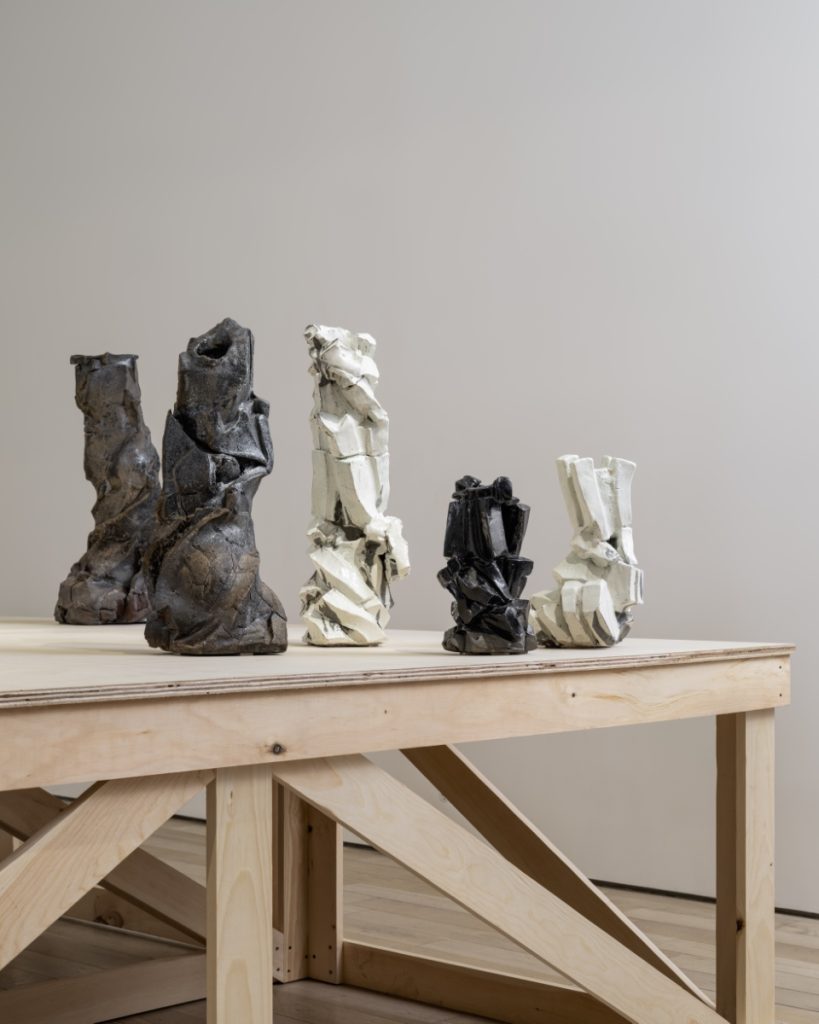
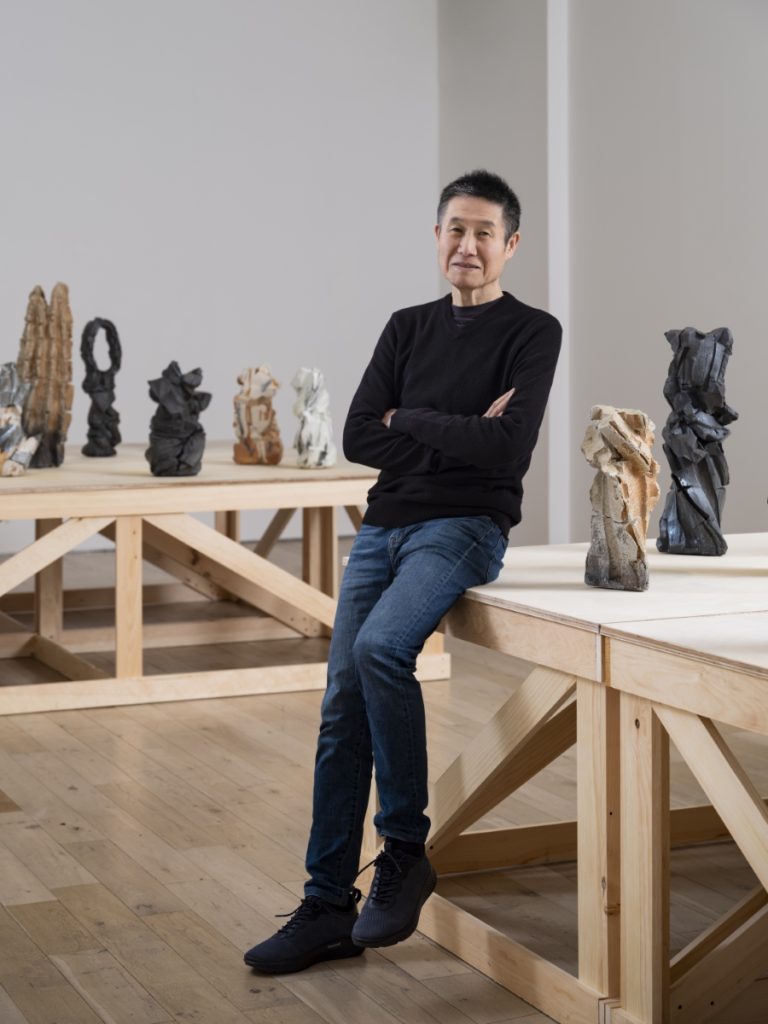
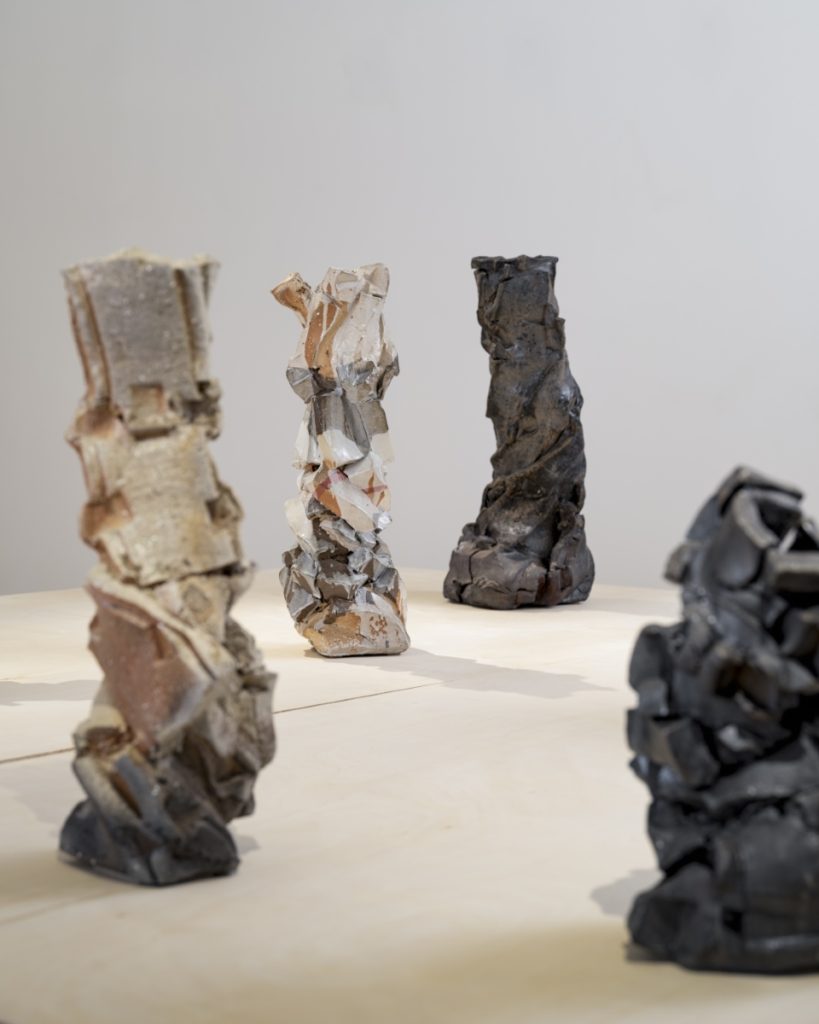
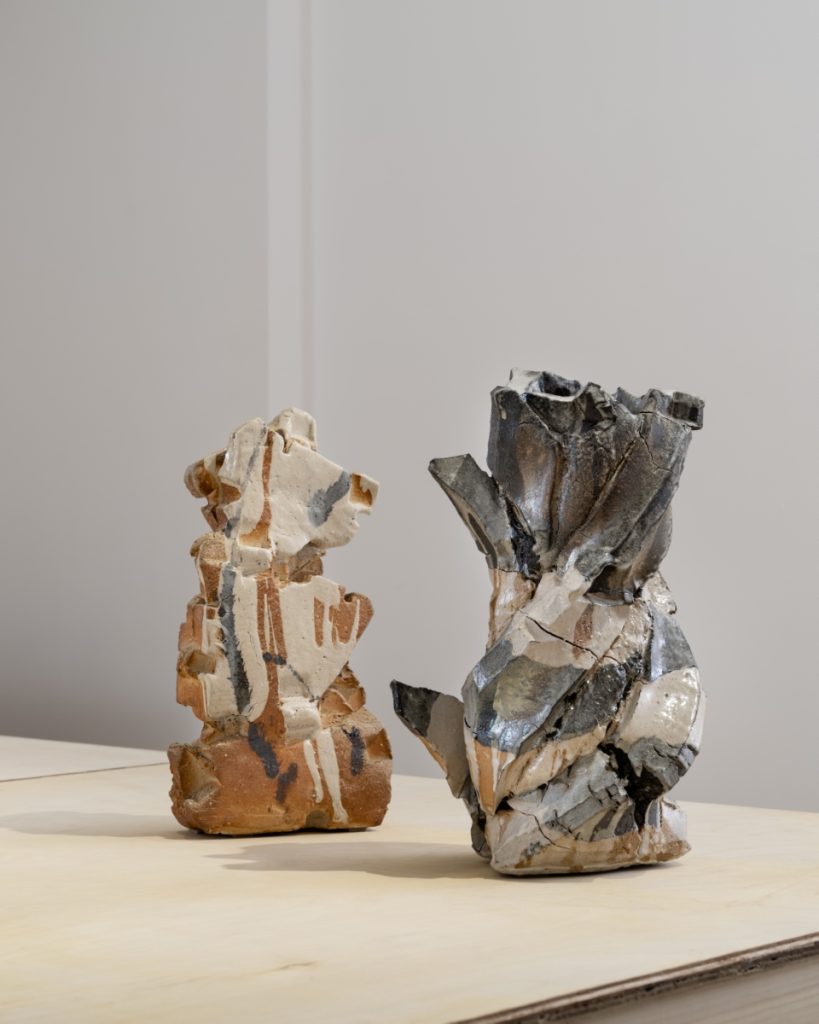
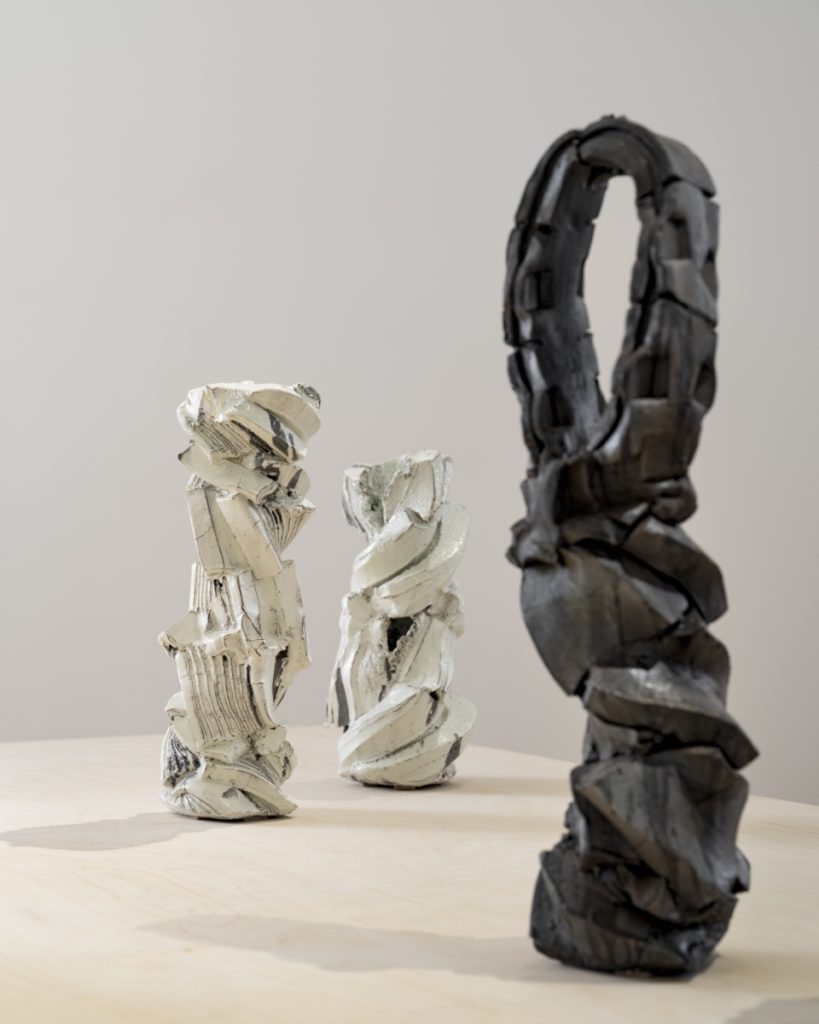
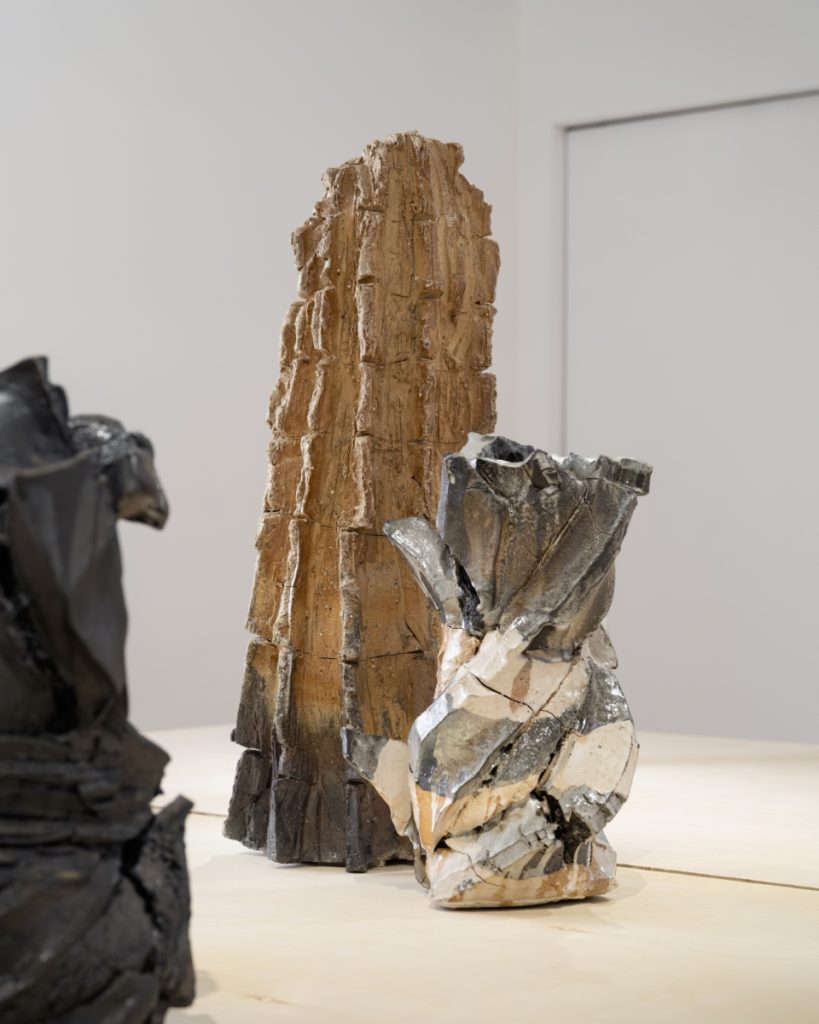
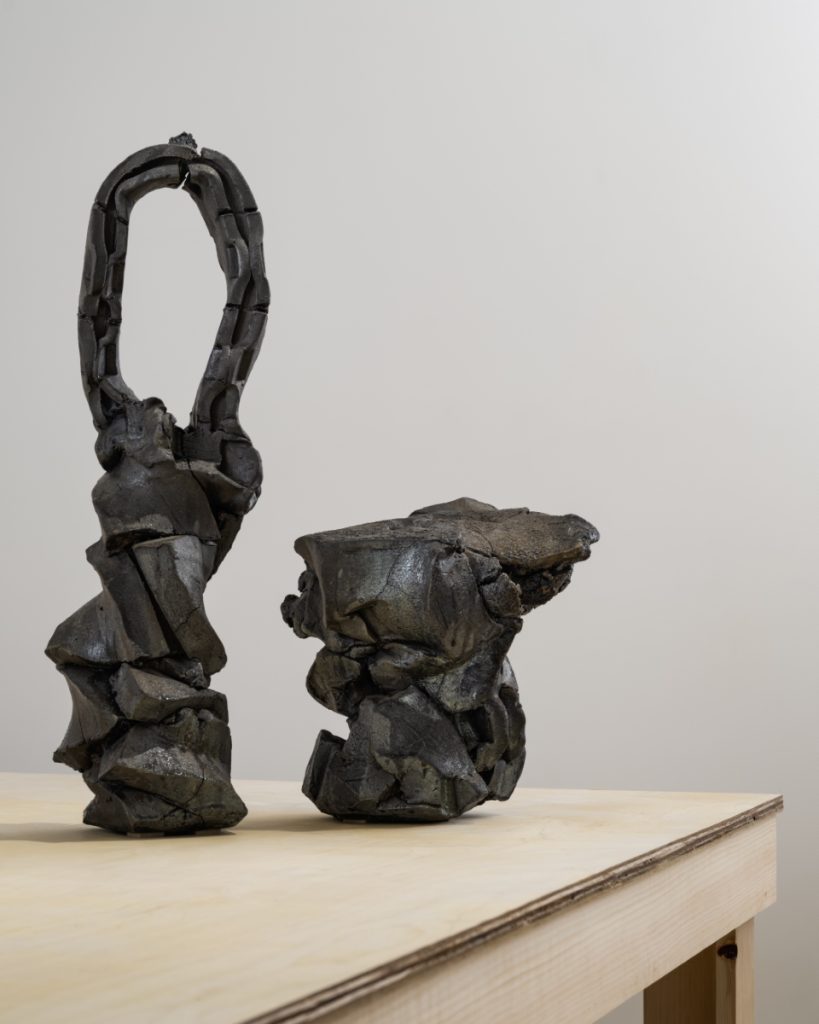
Shozo Michikawa: THE INBETWEEN is on view at HB381 Gallery, New York
March 8 – April 27, 2024
HB381 is pleased to announce THE INBETWEEN, an exhibition of new ceramic works by Shozo Michikawa (b. 1953, Japan). Michikawa creates expressive gestural sculptures inspired by nature and his native Japanese landscape.
In August 1977, the volcanic terrain of Michikawa’s hometown began to shift and grumble. Lake Tōya, formed in the caldera of the active volcano Mount Usu, sits on Japan’s northernmost island of Hokkaidō. Seismic rumblings issued from the earth and new vents opened along Usu’s slopes. The pent-up pressure emerged in a series of four eruptions over three days, in which columns of white ash rose to ten kilometers in height, traversing the troposphere and inundating the stratosphere. Cracks formed in the windows of airplanes overhead and trees were stripped entirely bare, their leaves singed before evaporating in the molten pyrotechnic atmosphere. The eruptive clouds developed their own storm systems, lashed by lightning, raining pumice stones—some up to 20 centimeters in diameter. The area’s seven thousand residents returned to find a new landscape carved into the mountain’s slopes, now deformed and interrupted with trenches, rifts, ash, and mineral debris.
For THE INBETWEEN, Michikawa transmutes this memory of nature’s force and potential for sudden rupture via a series of twisted, torqued, and rough-hewn sculptures. Bringing tectonic action to bear on wheel-thrown pottery, he initiates a dialogue with the traditions of Japanese ceramics which welcomes imperfection, distortion, and the creation of fault lines within the surfaces of hand-thrown vessels. Michikawa often begins with a rudimentary form—a cube or a triangular block of clay—incising, bisecting, and eliminating portions of the clay before he introduces a central axis. As he begins to turn the pottery wheel, he asserts an internal force which leads to contortion, stretching, and friction along the object’s outer edges. In turn, this generates rifts and radial movement—the quasi-geologic striations that recall the earth’s mantle and molten core. As Michikawa’s sculptures grow in height, they embody the dynamism of the volcano’s pulverized columns of ash; the tension between destructive force and stability remains palpable.
Michikawa, whose studio is located at the ancient center of Japanese pottery production in Seto, employs techniques from the region’s thousand-year-old traditions. He often fires his ceramics in an anagama, an outdoor, wood-stoked kiln which requires constant tending over three or more days of firing. The chance textures of wood ash, pine sap, charcoal, and mineral glazes combine to produce subtle, earth-toned variegations on the ceramics’ surfaces. Often, dark clay bodies combine with satiny, feldspar-rich Shino and white Kohiki glazes to produce stark contrasts in the sculptures’ twisting forms. Elsewhere, Michikawa shows rough, unglazed stoneware formed from volcanic Usu earth. Exhibited in combination, the grouping of forms produces a rhythmic cadence of geologic memory, volcanic action, and the smoldering forces of the landscape underfoot.
Shozo Michikawa has exhibited widely in Japan as well as internationally. His work is included in many important public and private collections including the Shimada City Museum, Japan; International Museum of Ceramics, Faenza, Italy; Victoria and Albert Museum, London, UK; Ashmolean Museum, Oxford, UK; Minneapolis Institute of Art, MN; Los Angeles County Museum of Art, CA; and Philadelphia Museum of Art, PA. He is the recipient of a gold medal at the Internationale Handwerksmesse Munich and was a finalist for the Loewe Craft Prize in 2019.
Contact
info@hb381gallery.com
HB381
381 Broadway
New York, NY 10013
United States
Photos by Joe Kramm




